Last Updated on March 20, 2025 by April
Are you looking for colorful drought-tolerant plants to add to your garden? This article will examine 31 drought-tolerant plants that can help you create a beautiful garden even during dry spells.
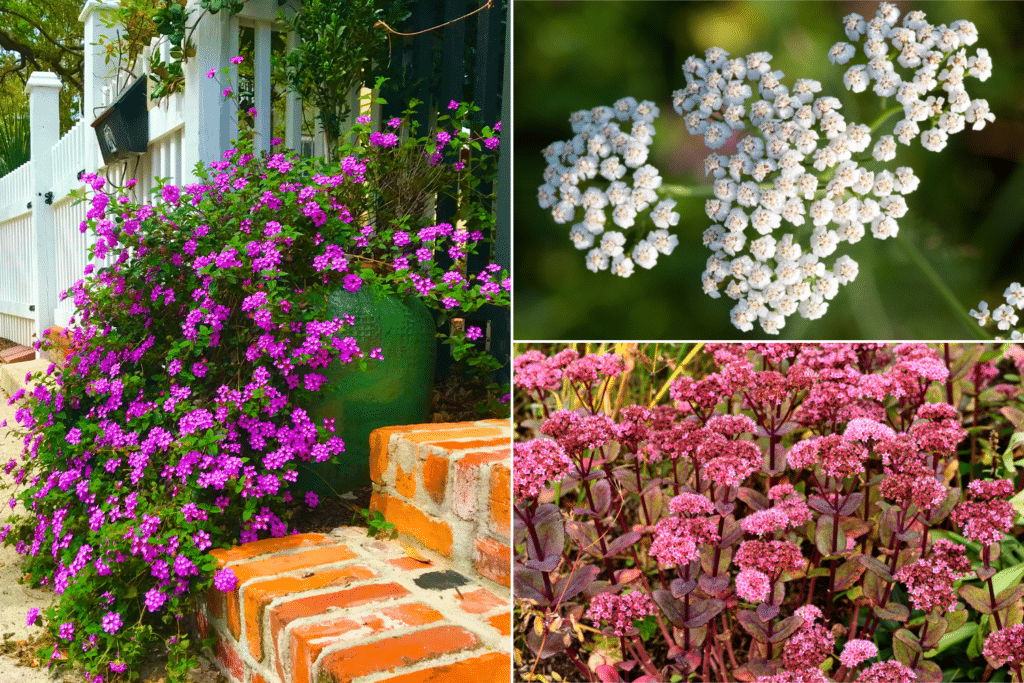
Hot weather can be difficult for plants to survive in, but various drought-tolerant plants can even thrive in these conditions. From cacti and succulents to herbs and ornamental grasses, a wide range of options are available for gardeners who want to cultivate green spaces despite the heat.
These will be divided into categories such as cacti, succulents, herbs, ornamental grasses, vines, perennials, annuals, and shrubs so you know exactly what kind of plant is best suited for your needs. Read on to learn more about these incredible hardy specimens!
Before we get started, please keep in mind that some of these plants are poisonous to children and animals. For any plant you are interested in, be sure to check if it is toxic to your household before planting.
Drought Tolerant Perennials
1. Black-Eyed Susan
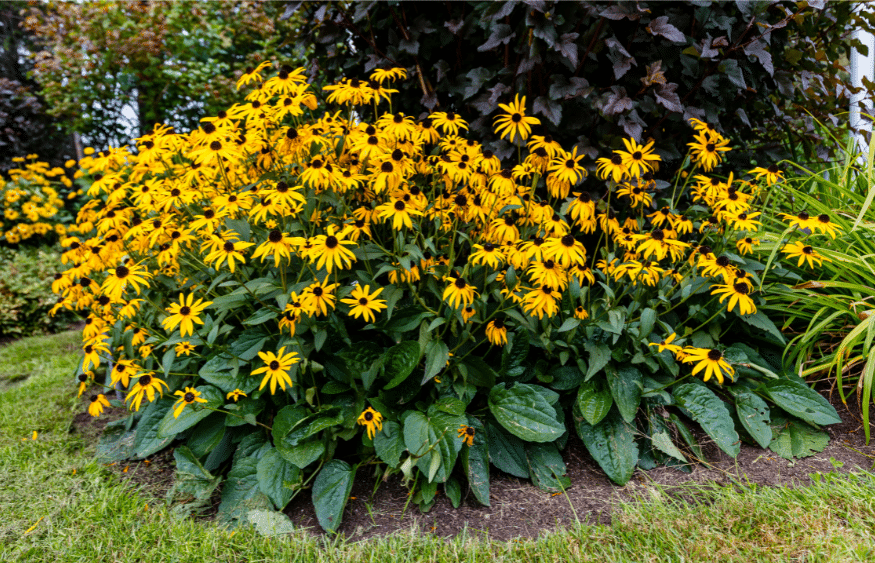
This popular perennial has daisy-like yellow or orange flowers that bloom during summer. It easily adapts to heat and drought conditions and often reseeds itself for a continuous display of color each year.
2. Yarrow
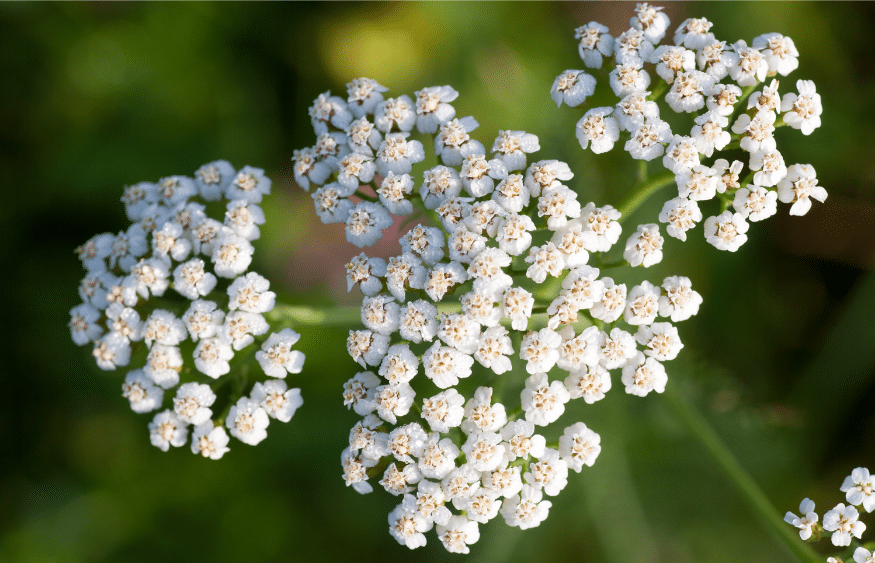
This clump-forming perennial is drought-tolerant and deer resistant, making it a great choice for hot climates. It produces clusters of small white or yellow flowers during summer and requires little maintenance to thrive.
3. Blanket Flower
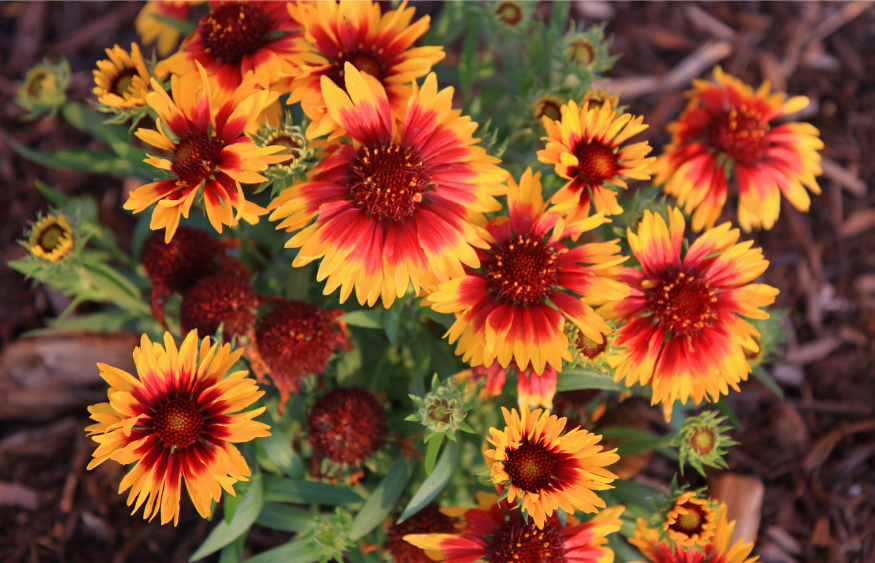
Also known as gaillardia, this heat-loving plant has bright yellow or red daisy-like flowers that bloom from late spring to early fall. It’s low maintenance and works well in most soil types with minimum water requirements.
The blanket flower is a tough little shrub that works well in dry climates. It’s native to the southwestern United States and Mexico but thrives at high altitudes of up to 11,000 feet. This drought-resistant plant can grow into a small tree reaching heights of 20 ft., hence its nickname, “tree daisy.”
This plant prefers full sun and well-drained soil but will grow in shadier areas. It does not like wet feet or a lot of humidity, so make sure the area you’re planting is on higher ground than other plants around it.
4. Rose Campion
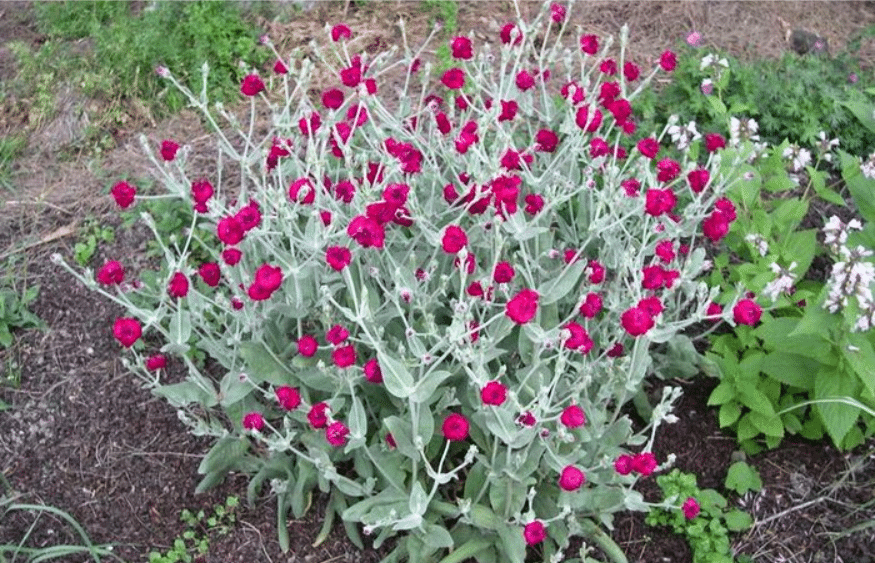
A Rose campion is a perennial plant that has pink or white flowers. Its leaves are green, and it likes to grow in sunny areas with dry soil. Rose campion can be planted annually if you live in zones four through six (zones one through three should not use this plant).
5. Oleander
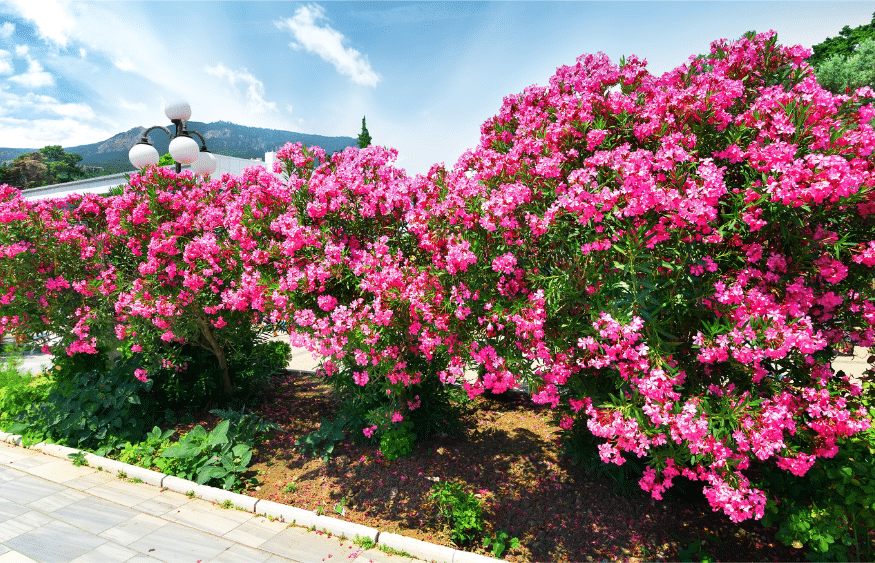
The oleander plant is a tough, drought-tolerant bush that can also be ornamental. Oleanders are native to the subtropical regions of Africa and Asia but have been grown in temperate areas for centuries because they bloom all year round.
This shrub needs full sun to thrive and is able to withstand hot, dry weather. It can also grow in various soil types and needs little maintenance once established. Oleanders are hardy plants that have no insect or disease problems.
6. Verbena
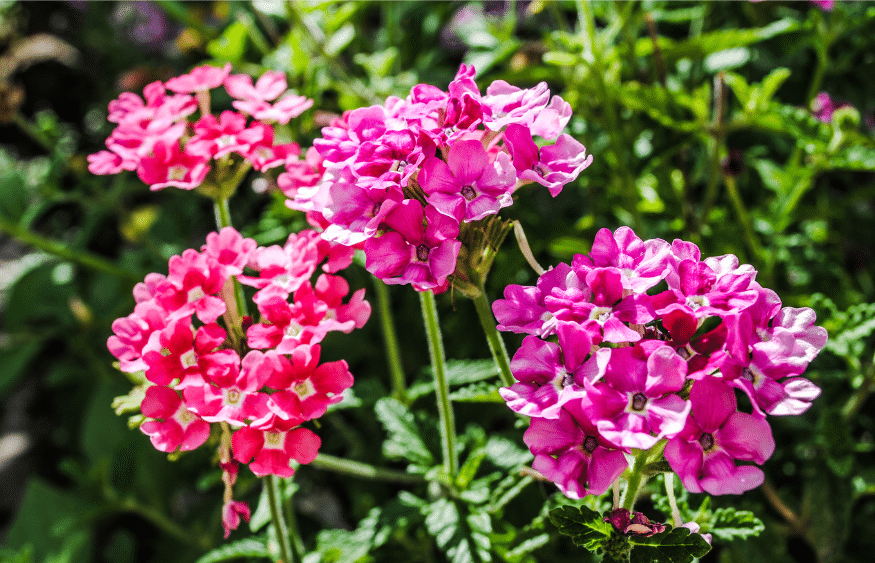
A good option for dry climates is verbena, which has a variety of blooming colors. Plant it in the ground or wide and shallow containers to accommodate its root system. Water when needed but not excessively because this will cause rot – make sure you only water until there’s just a light film on top of the soil surface.
Drought Tolerant Annuals
1. Zinnia
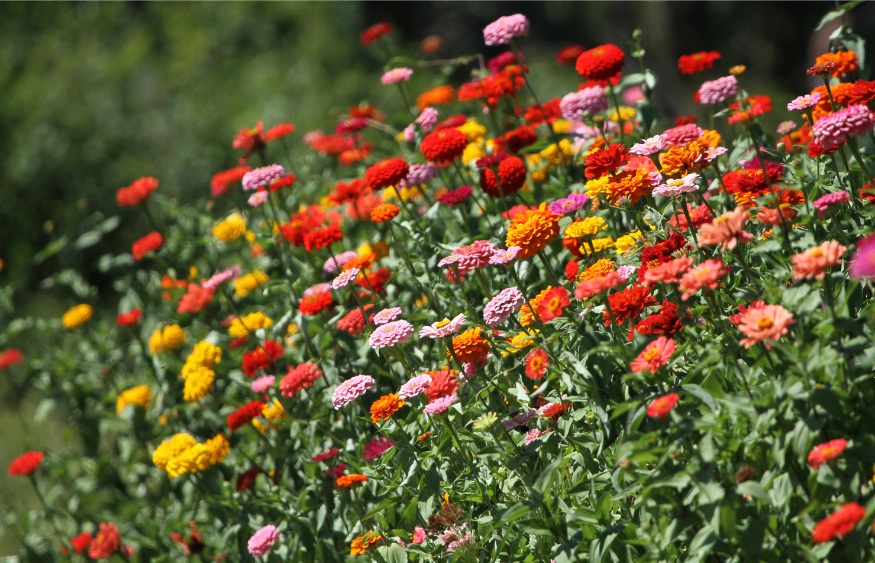
This popular annual is native to Mexico and blooms in shades of red, orange, pink, or purple throughout the summer. It’s heat and drought-tolerant and can tolerate various soil types.
2. California Poppy
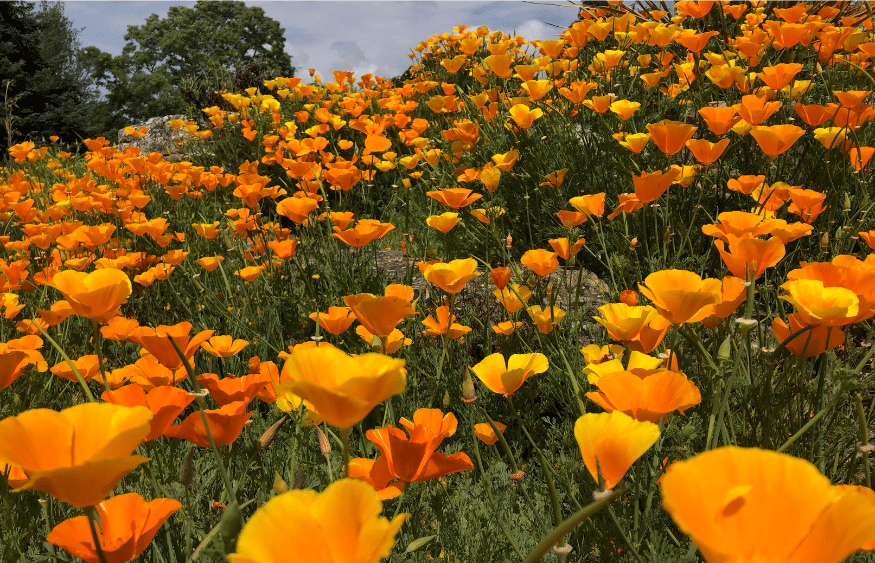
This vibrant annual is native to the western United States and produces bright orange, yellow or red flowers during spring and summer. It requires little water once it’s established and will reseed itself for years to come.
3. Marigold

These cheerful blooms have been grown for centuries due to their easy-care nature and ability to tolerate hot, dry conditions. They come in shades of yellow, orange, or white and typically bloom from mid-summer until frost.
4. Portulaca
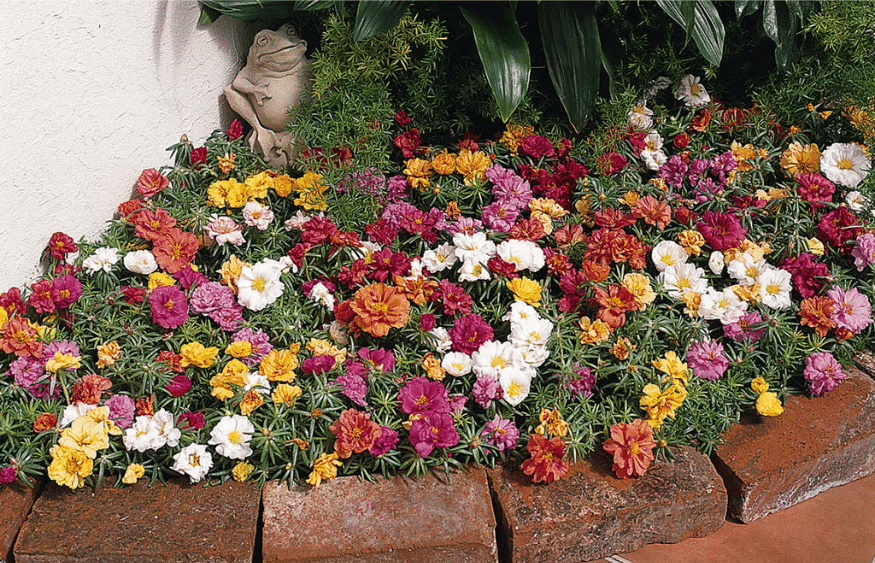
Portulaca’s tiny flowers are happy to grow in dry, warm soil and enjoy a sunny spot. They’re also one of the easiest plants to grow, making an excellent choice for beginners!
You’ll find that these drought-tolerant plants do not require much water or fertilizer either – just enough to keep them happy.
Remember that they are not cold-resistant, so you must carefully consider where and when you plant them.
Ensure the soil is well-drained before planting these drought-tolerant plants because they will rot if their roots get too wet or soggy
5. Wallflower
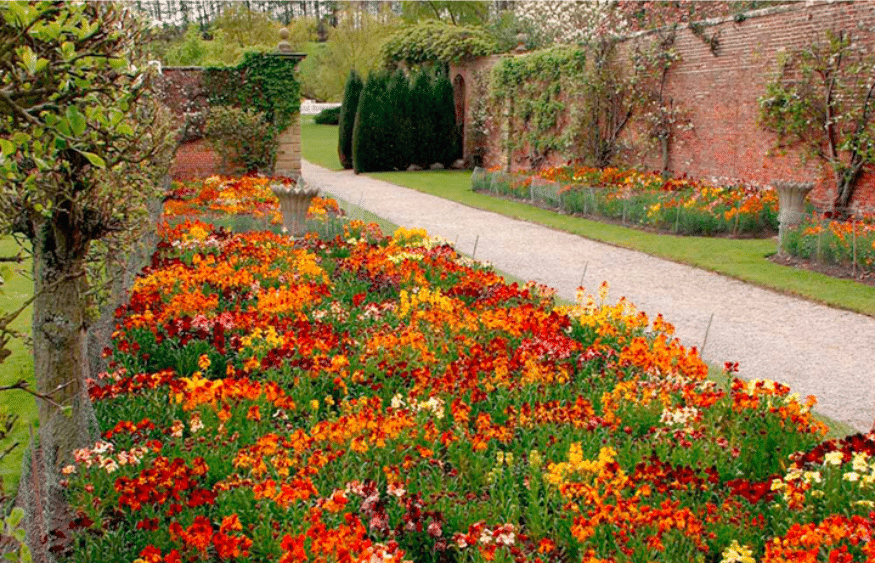
Wallflowers are a genus of plants within the daisy family. Each flower is a cluster or “head” of multiple flowers; each head can be up to about 30 cm in diameter. Their color ranges from purple, pink, red, and white colors.
The plant’s name derives from its tendency to grow on plastered walls and cliffs.
In dry climates, they are a good choice because the plant is able to conserve water by closing its leaves when it’s not in direct sunlight or under high winds.
They also have evolved adaptations that allow them to survive with little or no soil moisture, such as deep roots that can reach into the moisture-giving subsoil and hairy leaves that create a humid microclimate.
Drought-Tolerant Cacti
1. Saguaro
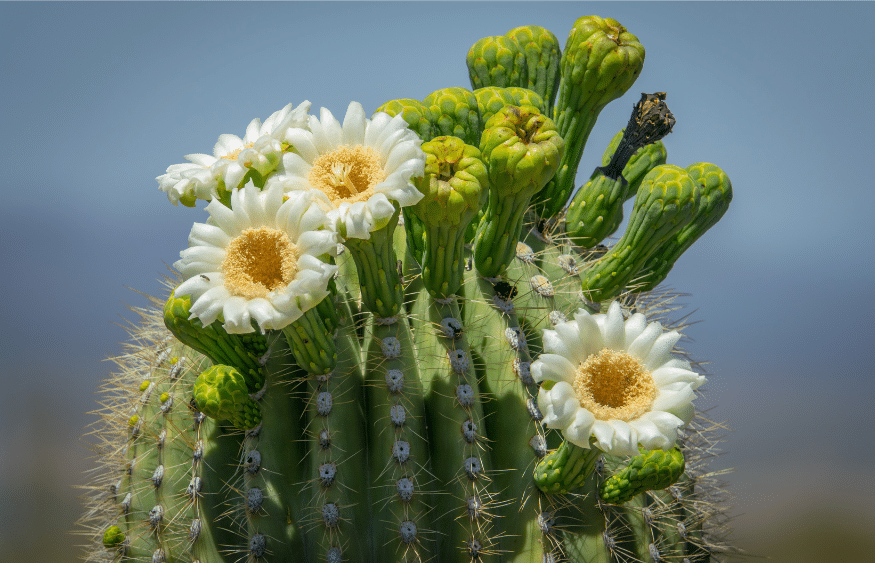
This slow-growing cactus can reach up to 40 feet tall and is native to the Sonoran Desert in Arizona and Mexico. It has a woody stem with large white flowers that bloom in summer.
2. Barrel Cactus
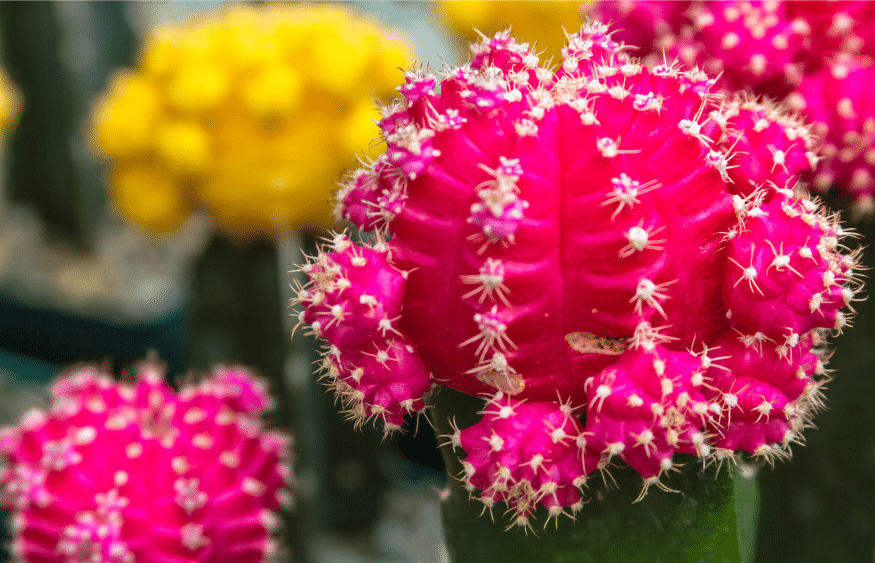
This cactus species is widely distributed throughout North and South America, from Canada to Argentina. It grows up to 5 feet tall with spines that protect it from predators and heat, making it perfect for hot climates.
3. Prickly Pear
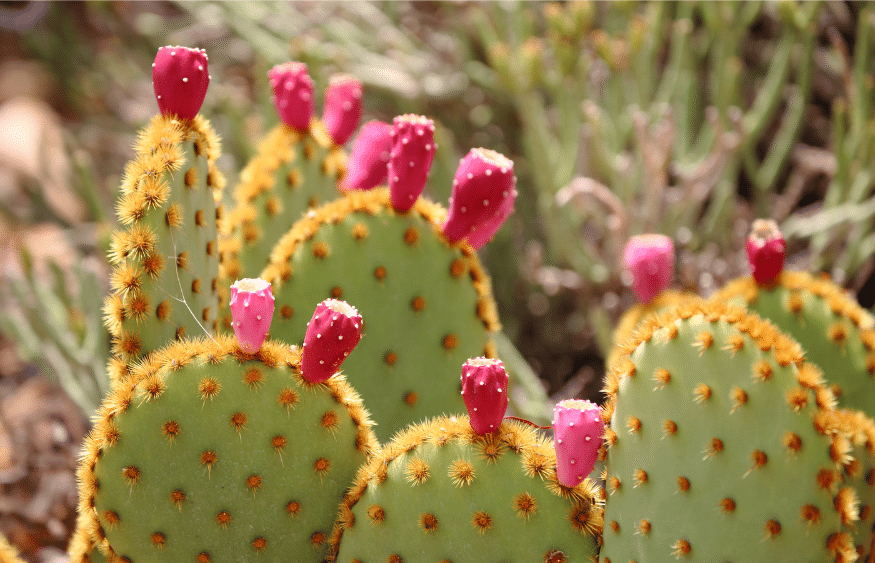
This popular edible cactus is found across the Americas and is often used in Mexican cuisine as nopales or tuna fruit salad. Its flat, oval pads are covered with spines that protect it from predators.
Drought Tolerant Succulents
1. Sedum
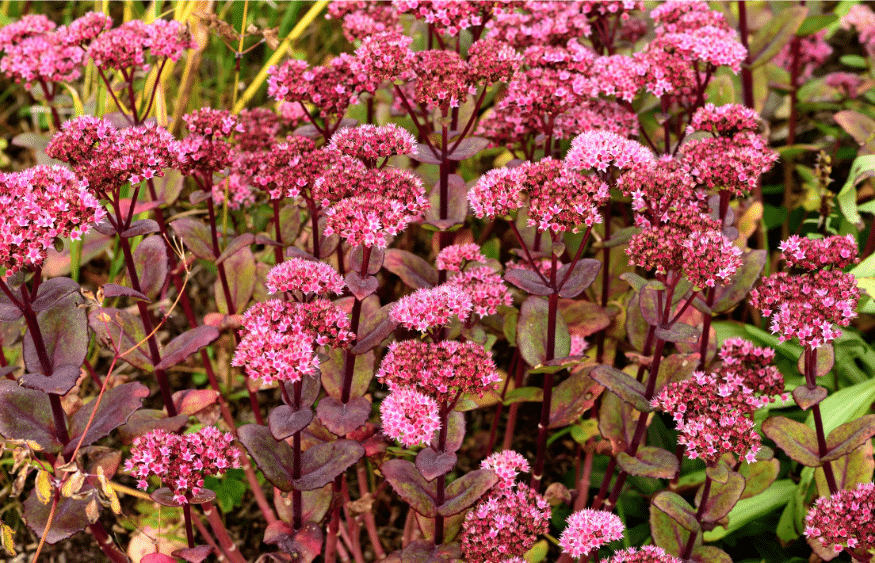
This low-growing plant is a succulent and perennial with yellow, pink, or white flowers in summer. It’s often used for ground cover and can tolerate dry soil conditions.
2. Echeveria
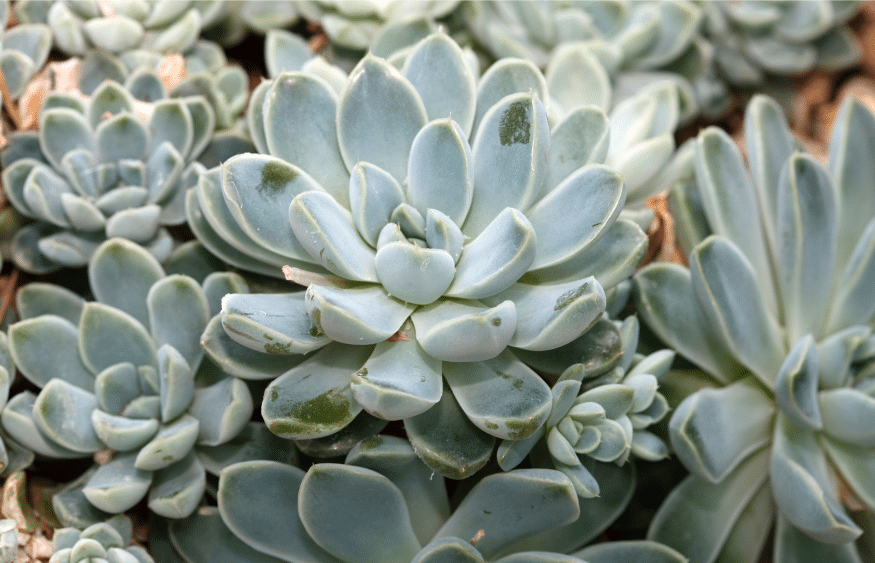
These rosette-shaped succulents come in various shapes and sizes, ranging from deep purple to bright green or blue-gray hues. They require little water, making them perfect for hot climates.
3. Aloe
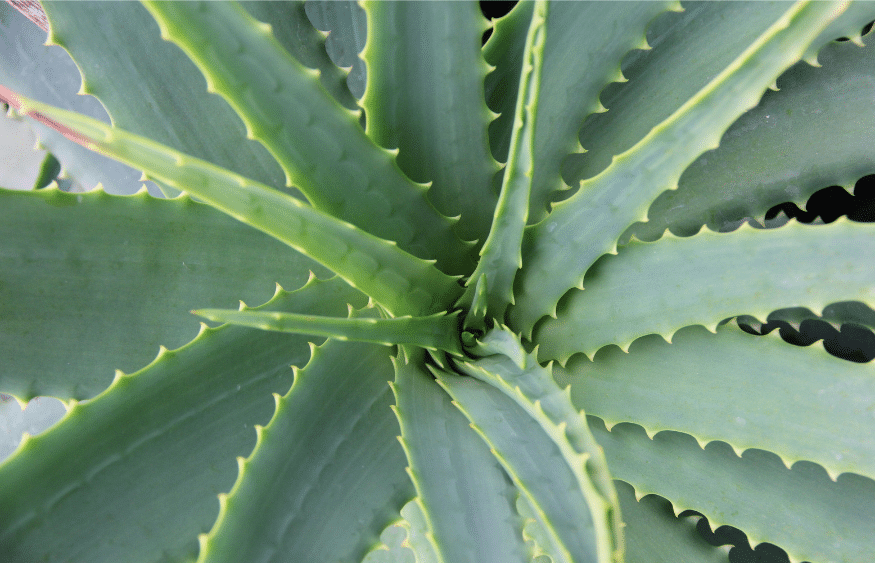
This popular succulent is easy to grow and a great addition to any garden due to its medicinal properties. It’s drought-tolerant and can be grown in full sun or partial shade.
4. Agave
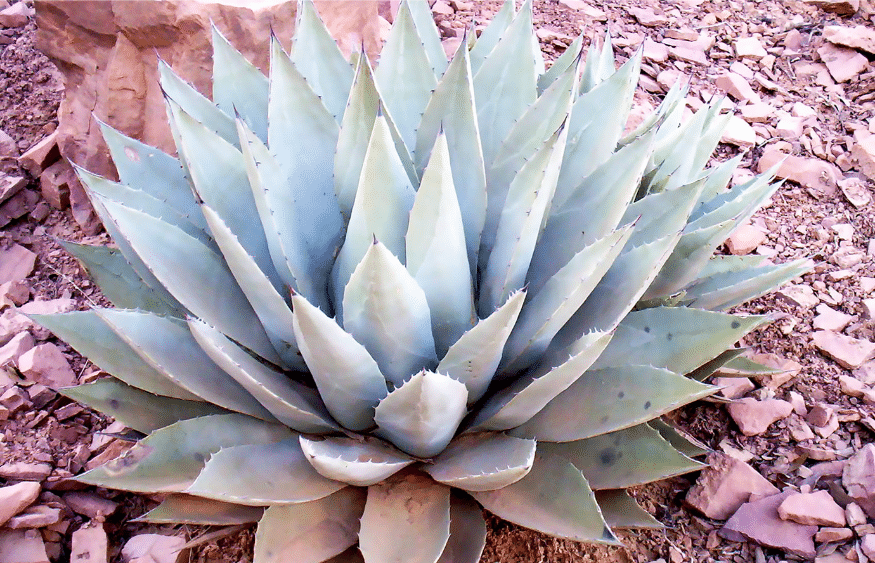
This large succulent is native to Mexico and can reach up to 6 feet tall. Its thick spines protect it from predators, making it ideal for hot climates.
Drought-Tolerant Herbs
1. Rosemary
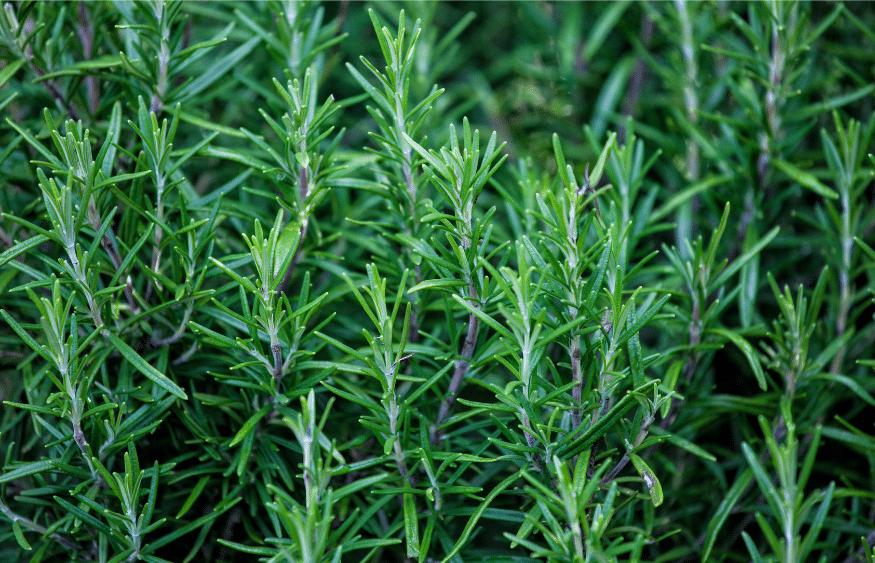
This herb grows well in hot, dry climates and is often used as an ornamental plant or to flavor various dishes. Its small blue flowers bloom during the summer months.
2. Oregano
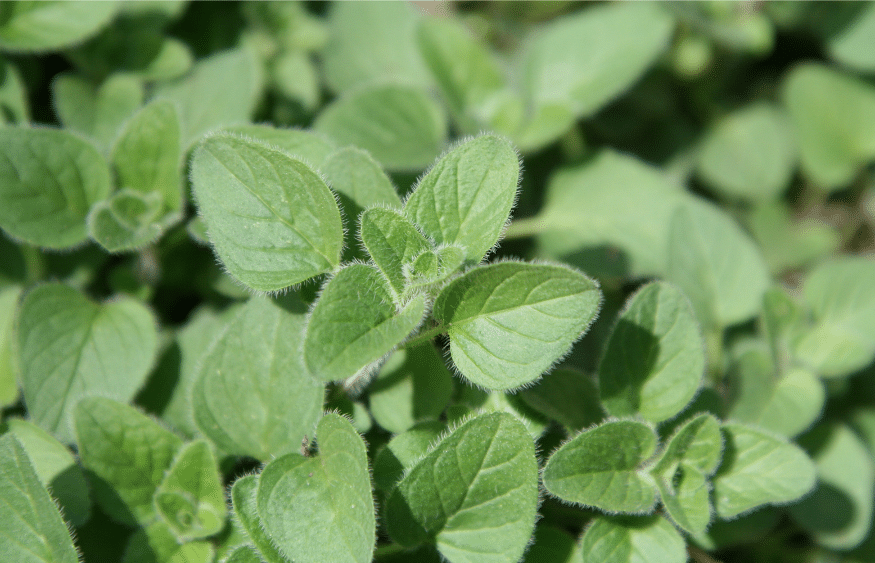
A member of the mint family, oregano is an aromatic herb that thrives in sunny, dry conditions with well-draining soil. It has tiny pinkish-purple flowers that bloom in late summer and early fall.
3. Sage
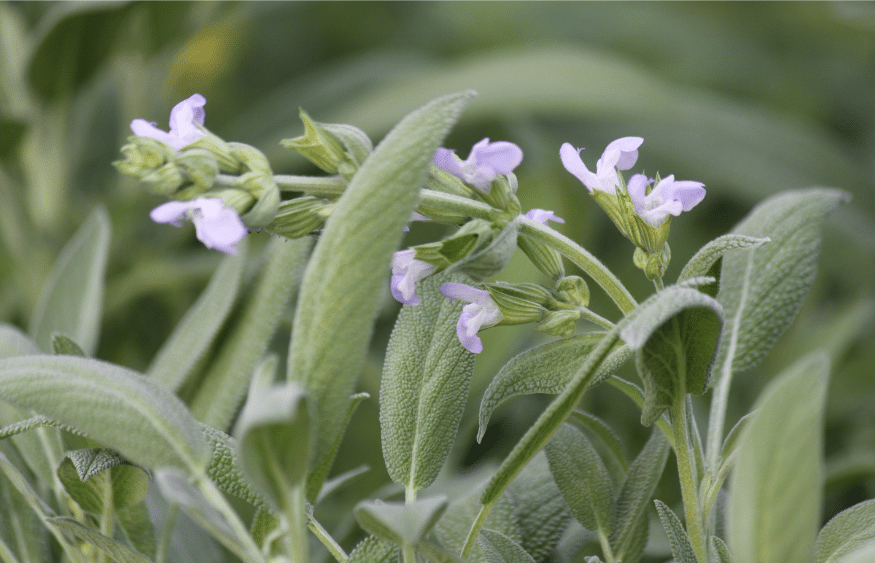
Sage is a hardy herb well suited for dry, sunny climates. It has small, purple, or blue flowers that bloom in the summer, and its leaves can be used to season various dishes.
Commonly known as “the wise woman’s herb,” sage has been used for centuries to impart wisdom and strength. It is also sometimes called the “herb of remembrance.” The Romans used it in their bathwater because they believed its medicinal properties improved memory.
Sage in drought climates: Sage thrives in hotter, drier climates. It is a woody perennial that can grow up to two feet high but feature sparse foliage and small flowers.
Sage Care: Sage needs full sun at all times, so it’s best planted with other plants or near an area of the garden that gets direct sunlight for most of the day.
Sage plants can be propagated from cuttings of the stem or root, but because they produce a flowering stalk in late summer and fall, it’s best to allow at least six feet between each plant so that some will not receive as much shade.
4. Lavender
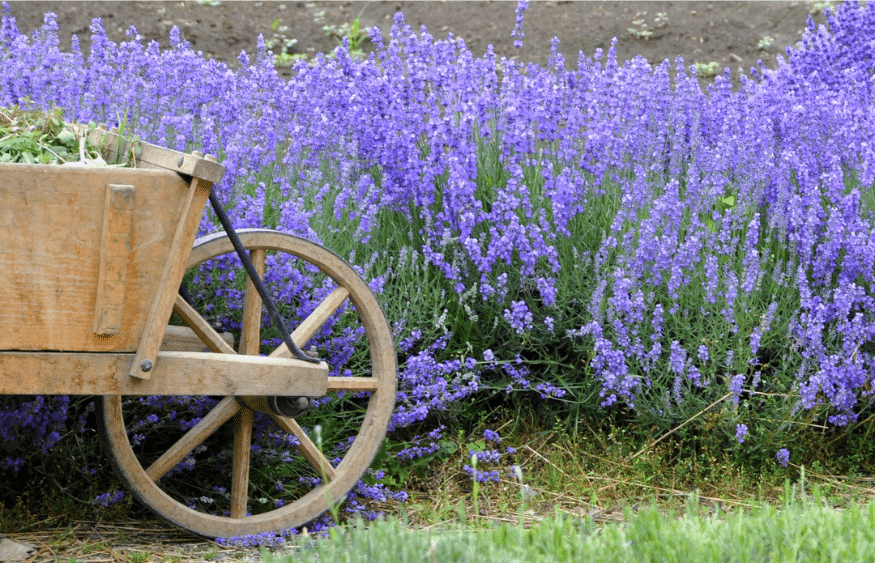
This fragrant herb is ideal for hot, dry climates and requires minimal maintenance. Its purple flowers bloom from summer to fall, making it a great addition to any garden.
Plant the lavender in a spot with full sun or partial shade. Lavender grows well as a ground cover, so pruning is typically done by trimming back some stems and leaves around it.
The plant will drop its blooms early, which can be picked to use fresh, made into candies, or steeped in boiling water to make tea.
Drought Tolerant Ornamental Grasses
1. Feather Grass
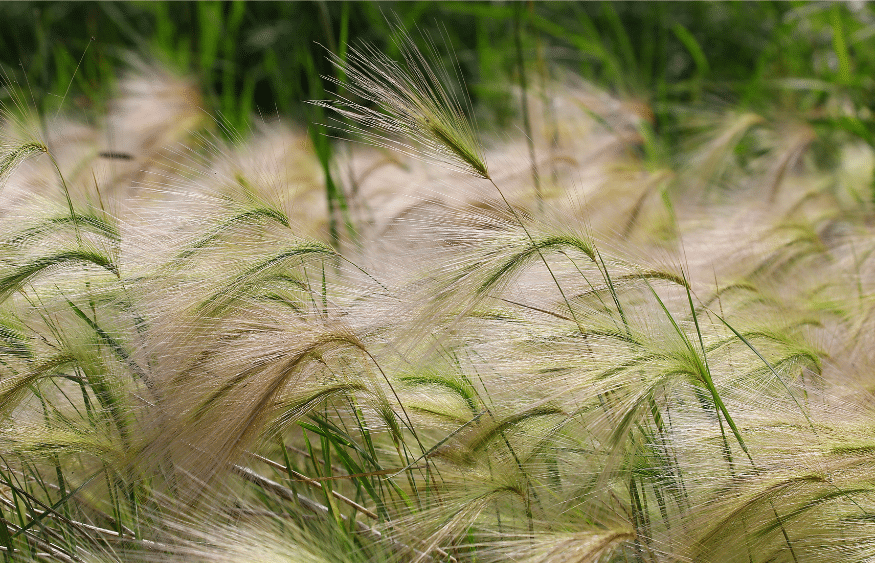
This ornamental grass is native to desert regions and grows well in hot, dry climates with little water. Its thin, wispy leaves create a soft texture in the garden, while its feathery flowers add a unique touch of beauty when they bloom in mid-summer.
2. Blue Grama Grass
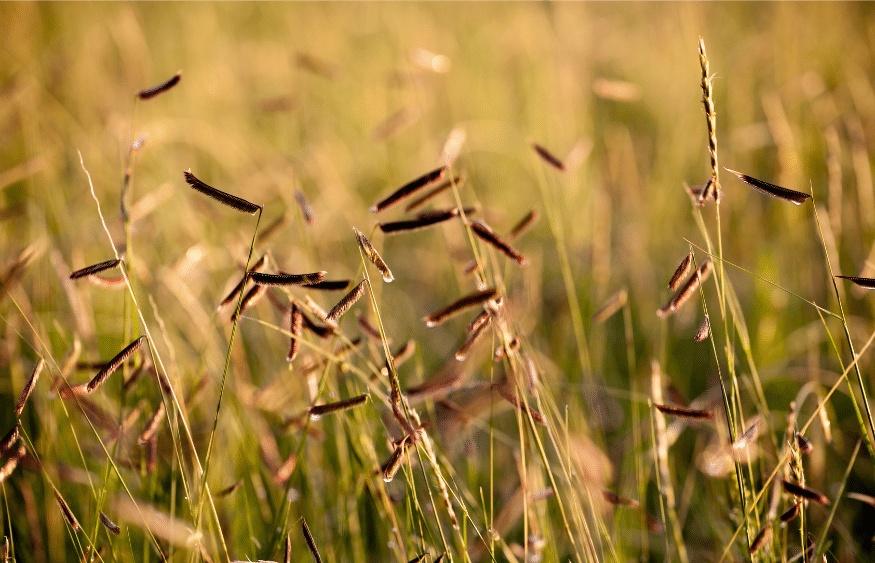
This low-maintenance grass is drought-tolerant and thrives in hot climates with well-drained soil. Its blue-green foliage stands out against other plants and produces small tufts of yellow flowers in the late summer months.
3. Fountain Grass
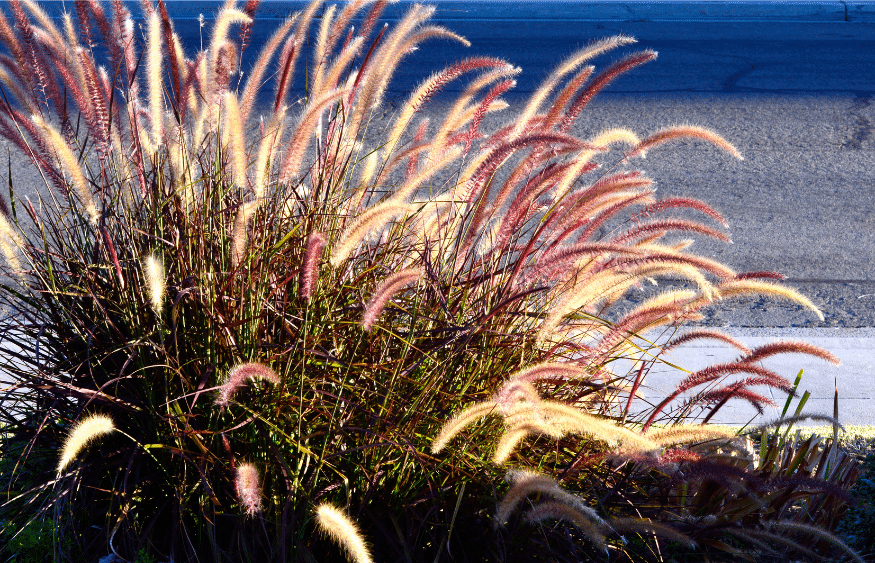
This ornamental grass is known for its mounding, fountain-like shape and long, cascading leaves. It produces feathery pinkish-purple panicles in the summer and does well with little water or maintenance.
The plant will drop its blooms early, which can be picked to use fresh, made into candies, or steeped in boiling water to make tea.
Drought Tolerant Vines
1. Trumpet Vine
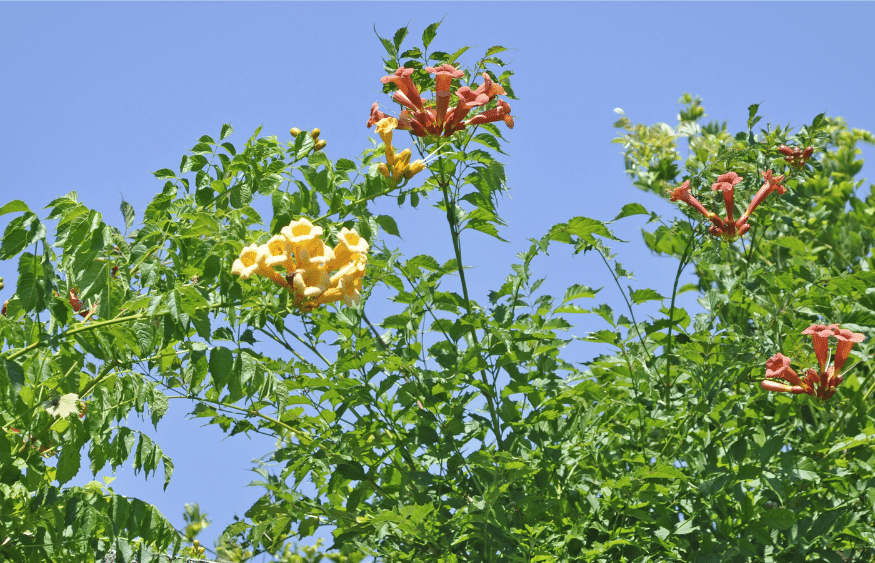
This fast-growing vine has bright, green foliage with trumpet-shaped blooms in red, pink, or orange shades. Its attractive blooms make it a great addition to any garden, while its drought-tolerant qualities make it perfect for hot climates.
2. Clematis
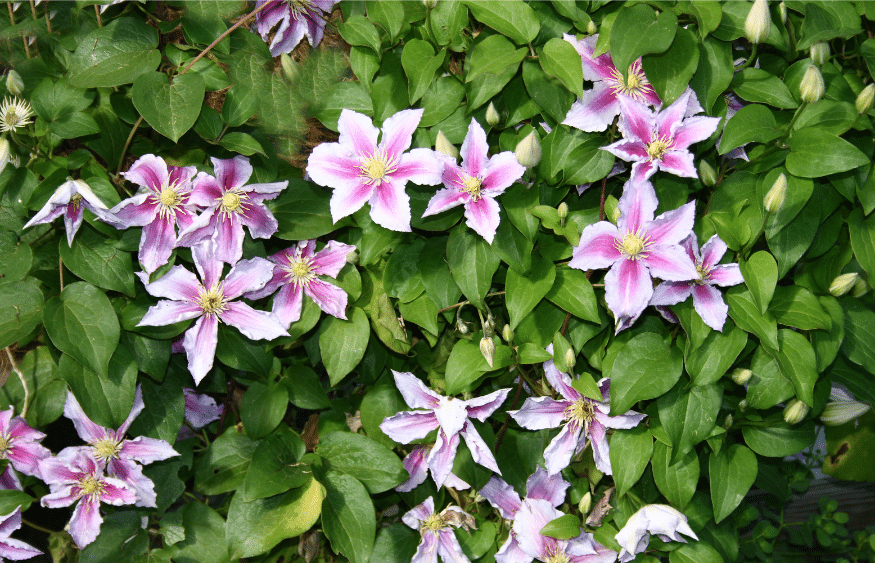
Another popular flowering vine, clematis produces large, bell-shaped blooms in purple, blue, or white shades. It’s easy to grow and can tolerate dry conditions with minimal water.
3. Morning Glory
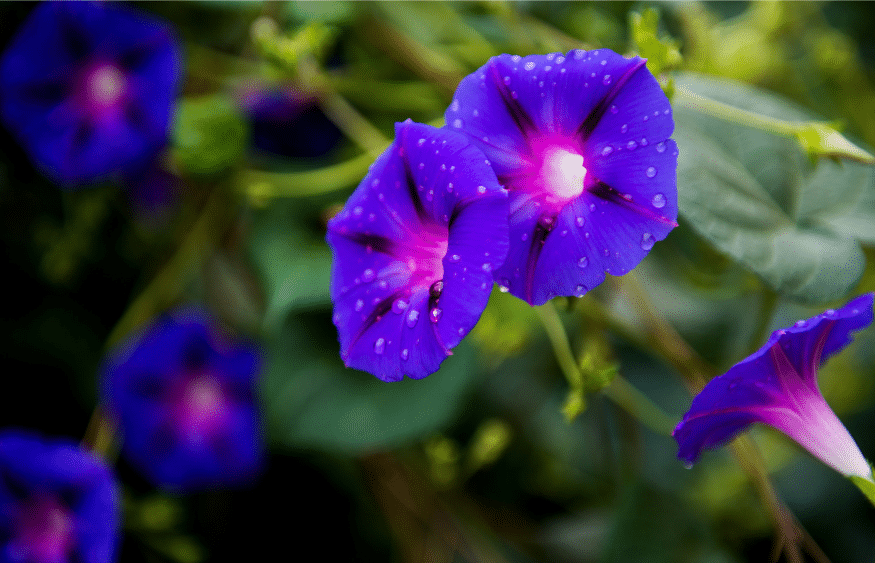
This twining vine is covered with attractive trumpet-shaped flowers in various colors, such as pink, purple, white, and blue. It tolerates hot weather and requires little water once it’s established.
Drought Tolerant Shrubs
1. Russian Sage
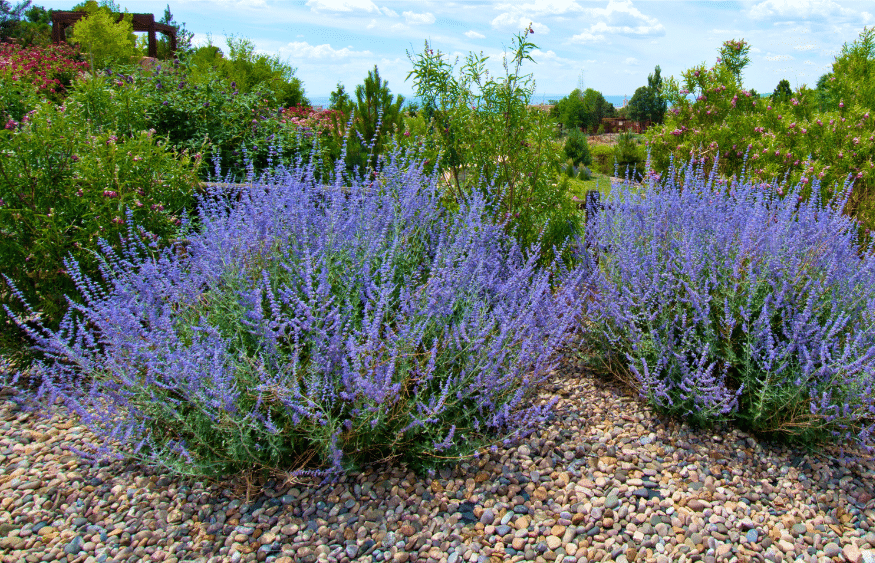
Russian sage is a must-have for any drought-tolerant landscape, but it is also one of the easiest plants you can grow. It’s hardy, easy to cultivate, and adaptable regarding soil conditions because it prefers well-drained soils with good air circulation. Russian Sage has an intense aroma, which many consider a plus.
It is very drought-tolerant and will survive on little to no supplemental water, so it can even be grown in areas prone to dry spells or droughts. You’ll want to ensure you fertilize this plant every two months during spring and summer because it requires nutrient-rich soil to produce its aromatic oils.
2. Lantana
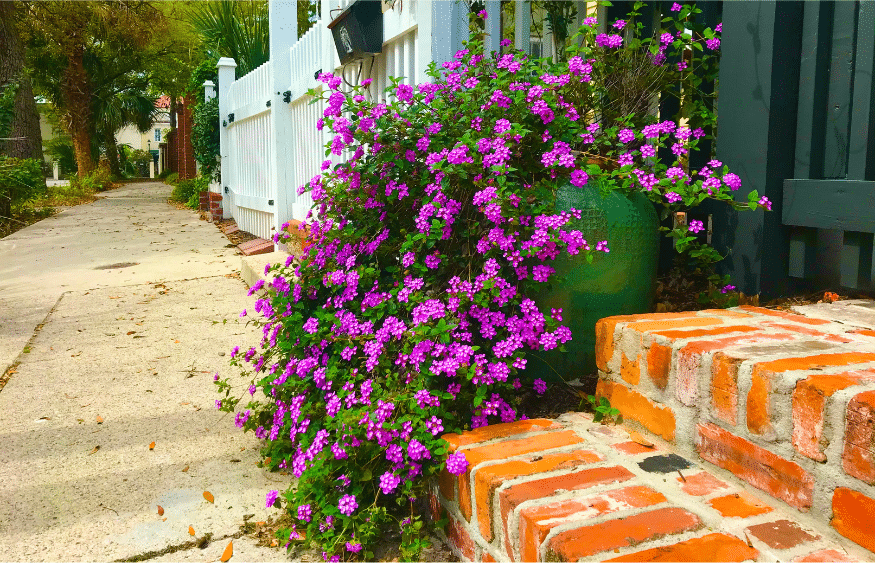
This popular shrub is native to Central and South America and can tolerate hot temperatures with minimal water requirements. It blooms in shades of pink, orange, or yellow throughout the summer and attracts hummingbirds, butterflies, and other pollinators to the garden.
3. Texas Sage
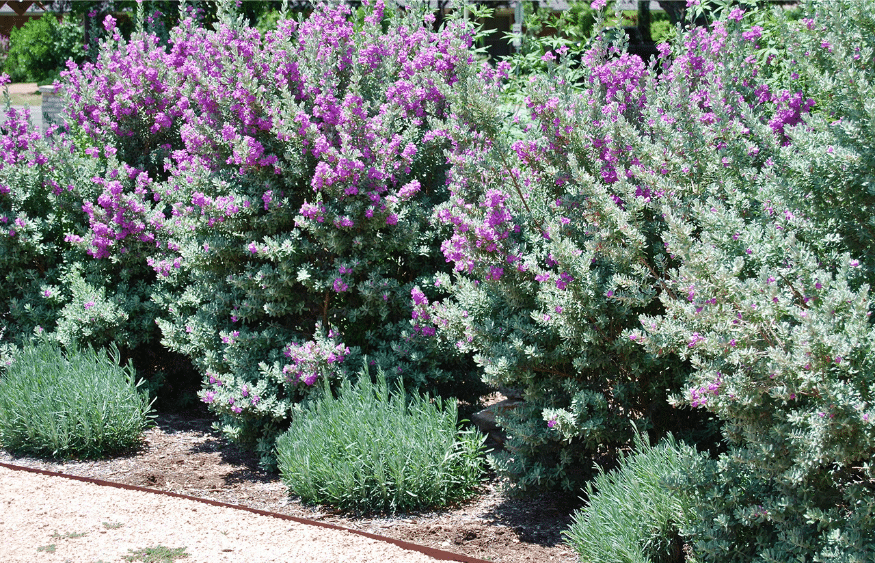
A low-maintenance shrub that grows quickly in hot climates with minimal water requirements. Its silver-green foliage creates an attractive contrast against other plants, while its lavender flowers add a splash of color during the summer months.
Tips for Watering Plants During a Drought
- Choose drought-resistant plants whenever possible
- Group plants together according to water needs
- Water infrequently and deeply
- Mulch around plants to retain moisture
- Check soil moisture levels before watering
- Use efficient irrigation methods such as drip systems or soaker hoses
- Consider using recycled water for landscape irrigation when possible.
- Install rainwater harvesting systems for supplemental irrigation.
- Collect water from roofs and hardscapes for use in the garden.
- Utilize native plants, which are adapted to the local climate.
- Plant drought-tolerant groundcovers in place of lawns that can require frequent watering.
- Cover exposed soil with mulch or compost to reduce evaporation loss.
- Water in the early morning when temperatures are cooler and humidity is higher.
Final Thoughts
These are just a few drought-tolerant plants that survive hot weather. With careful selection and planning, you can create a beautiful garden with minimal water requirements in any climate.
In addition to these plants, there are many other varieties that tolerate heat and dry conditions. Using these drought-tolerant plants, you can create an attractive landscape without worrying about over-watering or high maintenance costs.
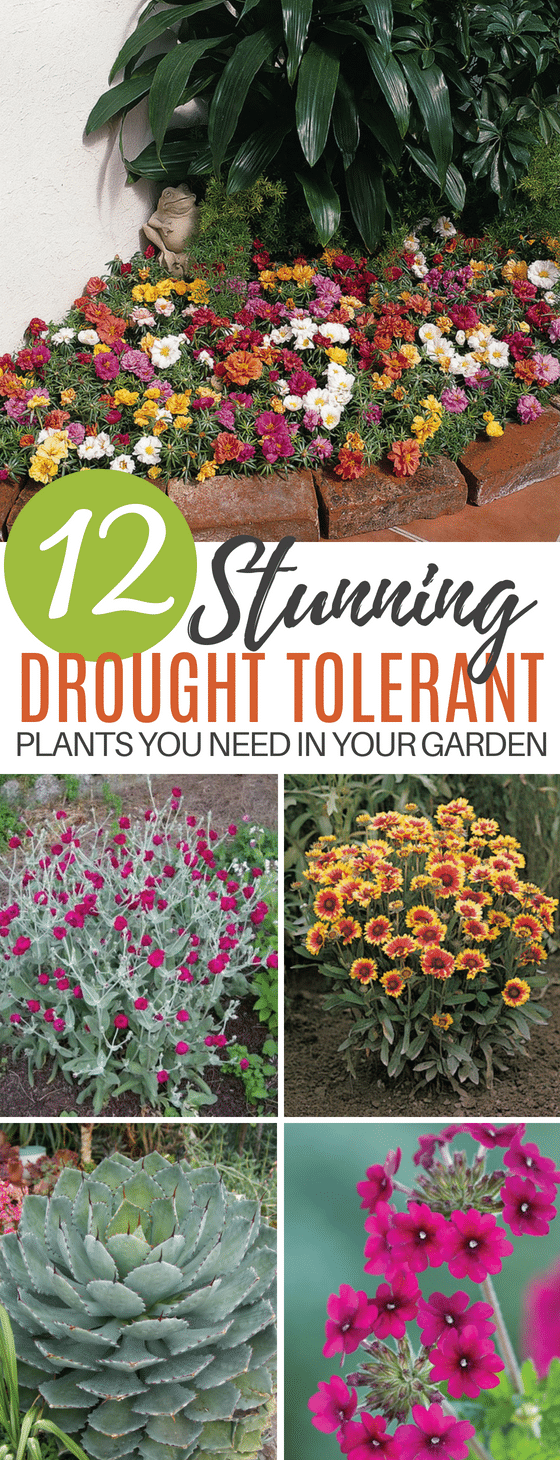



Please let me know where seeds, or plants can be bought. I especially want the wallflower, portulace, russian sage, verbenia, gaillardia, rose champion and lavender seeds.
Hi Linda!
You can find the Portulaca, Russian Sage, Verbena, Gaillardia, and lavender here: https://glacialridgegrowers.com/
Wallflower Seeds: https://www.americanmeadows.com/wildflower-seeds/wildflower-species/siberian-wallflower-seeds
Rose Campion Seeds: https://www.selectseeds.com/Products/rose_campion_seeds.aspx
I hope this helps! Let me know if you have any other questions as I’m happy to help! : )
Hello!
You were so helpful providing links for Linda, do you know where I can purchase the shrub, Lantana?
Thanks for any help!
Hi Renee!
It’s nice to meet you. : )
If you are in the California area, you can try Plant Express.
If not, please let me know so I can help you search!
Cheers,
April
Just want to warn you about the russian sage. I find it invasive. It sends out runners even under landscape fabric and pops out at any opportunity especially the edges. I would only put this somewhere you dont care how much it takes off. Maybe soneone has a containment idea but I fight it every Summer where it has been planted at our church. I think lavendar would give the same purple effect without taking over
Thank you!
My Russian Sage doesn’t run. It’s stayed in the same location for the last several years. Very happy with it.
Mine too!!
Same here. Stays put zone 5
This has also been my experience. Although I live in Ontario, Canada so it doesn’t really get the chance to be invasive!
The bad:
Russian sage is invasive in many situations.
https://www.gjsentinel.com/lifestyle/home_and_garden/russian-sage-interference-in-your-yard/article_34f8091a-e273-11e9-ba4c-20677ce07cb4.html
It is not for culinary use and can be toxic when touched or eaten:
https://www.doityourself.com/stry/dangers-of-growing-russian-sage
It is very attractive to bees. I would not plant it if anyone is allergic to bee venom/stings or afraid of bees.
On the good side it is highly drought tolerant when established and when we cut ours down (almost to the ground) it came back the next year. It was also tolerant of cold–as in snow.
We used to live in town and had problems with Russian sage in our landscape there. We have moved to the country and live on 40 acres and I have considered planting it here–at a distance away from the house where spread and bees would be of less concern.
I have a miniature version and it does run but hasn’t strayed too far from the original area planted. Wherever it is I’ll pull it if I don’t want it there.
I have Russian sage bursting up all along the west side of my Albuquerque home. You’re right, it’s just everywhere! I like it, the bees love it, we hack it back every fall, and it’s probably five feet tall today.
I have a very happy russian sage (perovskia) that is over four feet tall in bloom-planted it 11 years ago in a bed of daylilies and it has never had runners of any kind. It is a ‘Blue Spire’, and is planted on the edge of zone 5 and zone 6 -perhaps it is invasive in warmer climates?
Hi Susan, True Russian Sage (not a member of the Salvia Family) isn’t invasive. You may have planted something that was being called Russian Sage and turned out not to be. You will find that Russian Sage stays where you put it.
Yes, we ended up having to pull it all out because it just kept running. We’re in zone 6b high desert.
The same thing with Morning Glory! I planted it for a trellis by my garden and it has taken over!! I fight it more and more every year!
Hi Linda, you can’t go wrong with Rose Campion. This flower was always in my mothers garden. I have multiple plants in my garden due to seeds at end of summer. Your first plant maybe skinny but will fmgrow fuller. Each plant will die down but will return even better. My mother plant looks exactly like the one in the photo. Would love to give you one of mine or even the seeds. Plant now for next year.
Do you have white ones
Hello. How can i have it. Im in the southeastern part of the Philippines. Will it grow here? Thanks
I’m sure you must’ve had a chance to see these flowers grow. There are two sets of flowers I will NEVER plant again in my garden. The first is Hollyhocks and the second is Russian Sage. They are very beautiful but they spread all over and eventually they will take over your entire yard. The seeds go airborne so they also ended up in my neighbor’s yards. It was a nightmare trying to get rid of them.
You will love or hate the rose champion, I love mine my aunt gave me years ago but it seeds and it will come up all over your yard but it us very easy to just pull up a move!!
I agree I have been trying for 4 years to get rid of it but it keeps coming back. I would never plant Russian sage again. It smells nice but it grows everywhere even in the lawn. When I originally planted it I planted 4 lavender plants and ever over 4 Russian sage plants. Within 2 years the Russian sage took over everything.
Is the oleander suitable for growing in the UK…?
Hi Robert,
I live in the UK and orleander will thrive in a sunny spot. It’s a Mediterranean plant so needs the sun and is very drought tolerant.
Please know that Oleander is poisonous. Not to be planted where family pets can access.
Thank you for mention it. Oleander is VERY poisonous. Beautiful flowers, but so you know.
Warning!!!! All parts of the oleander plant are highly poisonous! Even water from a vase that had cut oleander flowers or smoke from burning any part of the shrub can be toxic and/or cause rashes.
Here are two citations:
https://www.hgtv.com/outdoors/flowers-and-plants/trees-and-shrubs/oleander-is-a-dangerous-beauty
https://www.gardeningknowhow.com/ornamental/shrubs/oleander/oleander-toxicity.htm
You can find many others with a simple search, say “oleander as a poisonous plant” or any similar search terms.
Please keep in mind that Oleander is not good for asthmatics, pets or people with hay fever etc. In Australia it’s regarded as a noxious plant. Here are some quotes from the experts…..”Oleander remains toxic when dry. A single leaf can be lethal to a child eating it”. “Even touching the plant results in skin irritation or possibly dermatitis in those who are sensitive. “Nerium oleander is one of the most poisonous plants known, with all parts of the plant being toxic. Ingestion of just one leaf can cause heart attack and death,” notes Lady Bird Johnson Wildflower Center.” Anyway, just thought you might like to know.
Are any of these “deer resistant” plants?
The deer in my yard don’t eat the sage, lavender, fortnight lily or penstemon. They won’t eat oleander, for obvious reasons, and appear to leave the succulents alone. I don’t grow the rest.
good to know bc I have a deer and bunny population I’m constantly battling(:
I am looking for something that is drought resistent that can survive the Michiagan winters 3 miles from the lake in sandy soil Thanks
The Portulaca is also known as Rose Moss or Moss Rose. Momma always called it Rose Moss and had it growing everywhere. I collected some of her seeds one year and planted them the next spring, I had tons of it. I don’t know what happened to it over the years, but I have’r had any and I love them. They were hardy growers here in Southwest Indiana. If you pinch the dead ones off, many more will come on, I always dead headed mine.
I love moss roses! It’s about the only thing I have that thrives. I live in a dry hot climate. I water them, but they are okay if I forget to once in awhile. The nice thing about them is they bloom constantly all summer in a rainbow of colors!
Yes it was Linda! I grew up in Southern Indiana too! Miss it as I’m in So Cal now. We had scads and scads of Rose Moss aaall over the farm too. Couldn’t seem to get rid of it. Now, Id LOVE to have that hardy color out here in my sparse and tiny patio garden. ? Where do you guys hail from? We grew up in the Northern tip of Warrick County. God Bless!
Thks for you information
I’m not good at growing seeds. I need plants in bloom. I live in tonawanda ny, do they sell them around here. I know it is kind of late in the season. Do they have to be planted every year.
I agree! I cannot get seeds to sprout. I prefer plants.
What are the zones for these plants and are they perennial or annual
Most websites for catalogs for seeds/plants have easy to use search features that will give you this information. Some require you to put in your email and zip code. (Tanstaafl-There ain’t no such thing as a free lunch/There’s no such thing as a free lunch.)
I haven’t the time now to search for sites that give the info you want. Simply put in the name of the plant and search and you will probably get several sites that can give you the information for the plant. It is tedious and time consuming.
BEST BET!!!!!
Under the photos of the plants there is a quicklink/hyperlink to a seller of that plant. Click on it. Most of them took me directly to the page for that plant which had the information you are looking for.
That is probably your best bet for now.
I too am looking for the zone info on these postings. I live in Florida and am wondering if these hold up in our summers with daily rains and intermittent torrential downpours?
While I love agaves in their myriad of forms and colors, they should be recommended only with caution just as several of the other plants here have been. Most have VICIOUS, needle like spines on the tips of each leaf, along with additional barbs along the leaf edges. These plants are definitely NOT suitable for use around children or pets. A somewhat safer alternative might be certain species of aloe, whose spines are not nearly as vicious, although they do still warrant caution.
Such great information, Robert! Thanks for reaching out. We all appreciate you. : )
I wish I had this years ago when I lived in Tucson, Arizona! I did have Portulaca there that did very well. I do have very pretty Portulaca here in North Carolina. By the way the plural of cactus is cacti.
I live in Tucson too. I’m glad you advised her on the correct plural form of cactus, which is cacti.
Portaluca also called Ice Plant here. Never had much luck with that or Verbena. Had a gorgeous French Lavender once. Grew very well, til hubby sprayed weed killer on it! I had been there for years! What was he thinking? I was so mad!
Liz, Your comments about your husband spraying weed killer on your Portaluca made me chuckle. I can relate to what you wrote. Been there and had to put up with the same kind of husband accidents(?) in my yard. Thanks for the laugh even though it truly was not funny that you lost your beautiful Fr Lavendar. Toni K. Oregon
Wonderful site to visit. And you get the answers you been looking for. Thanks
The Portaluca is also called Jump Up and Kiss Me in Trinidad. It can also be grown from cuttings.
The Portulaca is also called Jump Up and Kiss Me in Trinidad. It can also be grown from cuttings.
The Gaillarda also comes in just red. Which i love better than the one with the yellow border. When you take the heads that are past flowering off it will keep giving. Such a grateful plant. Love it. And indeed droughtresistant.
What do you recommend for South Florida weather ?
Portaluca gets scraggedly and yellowish leaves in the hot summers of New Mexico.
I’m in New Mexico, but at a rather high altitude. I love Moss Roses. Does extra water help? Or do I need to get them a sun bonnet?
Are any of these perennials?
Rose campion is perennial and can live and THRIVE under 5 months of snow!
I noticed that most of the flowers were in the ground, have you any suggestions for flowering pot plants? Thank you
I noticed that most of the flowers were in the ground, have you any suggestions for flowering pot plants? Thank you
Hi Linda, you can’t go wrong with Rose Campion. This flower was always in my mothers garden. I have multiple plants in my garden due to seeds at end of summer. Your first plant may be skinny but will grow fuller. Each plant will die down but will return even better. My mother plant looks exactly like the one in the photo. Would love to give you one of mine or even the seeds. Plant now for next year.
I grow gaillardia , they are still blooming in Oct and Nov! The Orange, red and yellow colors are a beautiful addition to the fall colors of northern Ohio
I grow Gaillardia in south-central Ontario, and they bloom from early summer until late November! Except for roses, Gaillardia provide the last blooms in my gardens each year. Roses are even more impressive, since they continue to bloom past the first few snow falls.
I don’t think this is a duplicate post. My husband tried growing pansies from seeds. Planted 100 several germinated and all of them died. We ended up buying plants and they are gorgeous!
Any suggestions for successfully growing plants from seeds.
Hi where can I find a store in Canada Mississauga thks
I’m not far from you, Lindzi. What kind of store are you looking for?
Thank you, verg helpful. I live in South Texas where we had the big freeze this past winter. I lost 40 containers of beautiful plants. I been trying to replace them with plants that will take the hot sun with less watering. My color skem is bright red, yellow and purples. Where can I buy red verbena?
Hi Shirley!
Thanks for reaching out. : )
Red verbena is kind of hard to find right now but I found a waiting list on this site: https://www.provenwinners.com/plants/verbena/superbena-red-verbena-hybrid
I wish I could be of more help.
Please take care,
April
I grow portaluca in a large container on our parking, and it thrives. It gets full, hot sun during the day, with shade in the evening. Colors are really vibrant. Even I can’t kill it.
You forgot to mention that some of these plants are also poisonous and should not be grown in yards with children.
What is the best plant to put on my Mom’s grave? During the late part of the day there’s full sun but very early only partial. I’ve wanted to “pretty up” her grave but don’t know what to plant & when. I considered putting succulents but I’m not sure what are best & how to take care of them. Thank you for your help.
I know this reply is weeks later but I have tended my good friends grave for summer for several years (others leave bouquets I do actual plants) – we are in northern Illinois – easiest colorful choice would be snapdragons the seeds take 6-8 weeks so I buy plants -now with climate changes etc they’re a good choice very drought tolerant I do the “tall” snaps 12-18” if u cut them back after blooming is over they’ll bloom again thru summer & even light frosts and you can save the seed pods!
Angie go within. You know what you should put there. I know you do.
My Russian Sage doesn’t spread either. I love my Russian Sage and have planted in numerous areas in my gardens Maybe poster is thinking of Catsmint???
I love lavender, but it attracts masses of bees.
Just curious if any of these plants are recommended for potting planters? Need a few hanging planters and pots in areas of my backyard. Just need the plants now. Thank you!!
Are all of these annuals?
I have Russian Sage at one end of my narrow front garden and it’s been there without spreading for going on fifteen years. It is easily recognized by its distinctive odour when touched. It too should be dead-headed for return flowers.
I’m surprised trumpet vine isn’t listed. I have one and I’m in Nevada, this thing literally can’t be killed! It’s being extremely invasive and I never water it, yet it keeps growing and blooming it’s big orange flowers like crazy. If you have an area that you don’t care about a plant going crazy, trumpet vine is the way to go.
Do wallflowers, Verbena, and Snapdragons get eaten by Deer? Thanx
Here in the uk, my Russian sage has been in the same spot for about five years and has not spread at all. It makes me wonder if there are different varieties, some that spread and some that don’t. My gaillardias have bloomed from spring until November. I constantly dead head them so maybe that’s why. They are really useful to the bees that love them along with my dahlias.
Oleander in south Florida dies get eaten by some type of caterpillar. It was so bad I removed them all!
Is there a similar article about trees that can grow in extra heat. I’m in zone 10a and I would like to plant some shade trees but struggling with choice. Would you be able to reccomend anything or direct me?
Be careful with Oleander. They are wonderful, but have powerful roots. We had to replace our entire main drain from our house to our city sewer as the roots got into the sewer line. Very costly repair. Be mindful of where your water runs when planting them. Drought tolerant does not mean that they won’t chase water if they find a source.
Plant for your zone, plant for butterflies and hummingbirds to pollinate and the planet will love you.
I’ve killed plenty of lavender, cactus, and succulents over the years. I’m in Phoenix. You have to water the plants regularly for them to live.
Thanks for the info!
Hello,
I know you gave some sites to purchase seeds/plants.
Can you kindly provide site addresses for all the plants shown please.
Im interested in purchasing a few as well.
It will be much appreciated.
Kindly send to email address provided.
Thank you!
Be very careful with Oleander!! It’s sap is a neurotoxin!! I know of person who put a small bunch of flowers in a glass of water, a day or so later she noticed they were ready to be thrown out, unfortunately she left the glass in the reach of her 3 year old whom she caught taking a drink, he ingested possibly an once…in a short period of time became unconscious and later died. Even a small amount is very Toxic to humans and animals.
I would never ever plant Trumpet vine….it is SUPER INVASIVE and inpossible to stop from spreading. We planted three 16 yeras ago, installed 36: deep root barriers 8 yeras ago adn still have new vines poppinig up all over our landscape 20-30′ away from the orginal plants. It;s been a wack-a-mole nightmare ever since. Will be removing them trhsi year. I’d recommend Butterfly Vine instead. Whil it has lots of seeds that sprout, at least they can be pulled.
Can you please let us know which plants are dangerous? I have a dog and don’t want to plant something that is bad for her.